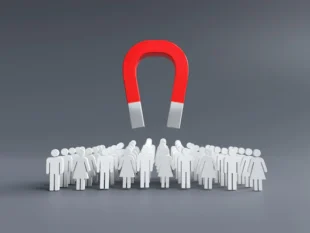How to Make A Clothing Website Visually Appealing
by Arina Smith Business Development 01 June 2018

There are more details to manage when starting a clothing company than most people would assume. In addition to coming up with on-trend designs and getting the right fabrics for them, you need to have a workspace to make everything come together and some sort of shipping arrangement set up.
Not to mention, figuring out how to make a clothing website and marketing this e-commerce platform to actually start getting customers. There’s so much to manage, which can often leave you feeling like there’s not enough time to do everything. But, you have to keep going!
Think of the reason you wanted to start a clothing company in the first place, then put in the work to make it happen. To create a stunning, stand-out clothing website, use the steps below.
Pick the Right Site Host and Web Designer :
A website is only as good as its host. You should pick a site managing system that allows you to make custom designs and use plug-ins for marketing and branding purposes. Also, it should be available for a fair price and have some sort of customer support ready for you.
Some popular e-commerce options to choose from are WordPress, Wix, Volusion, and Shopify.
Look into the pros and cons of each host before you make the final decision, as it will be very difficult and time-consuming to move all your content over should you ever wish to make a clothing website on another platform.
While you’re doing this research, start finding a web designer, too. This is someone who can build your clothing site from scratch or who can develop all the pages of your site on one of the hosting platforms you choose.
Either way, you can’t afford to move forward without this resource. Some business owners argue that you could, but it would take you significantly more time to learn how to do every little thing yourself than to outsource the work to someone who already knows how web design works.
Find a professional web designer to cut your time (and stress!) in half. But, be sure to work closely with this person in order to get the absolute best results for your website to sell clothes.
Know Your Audience :
Whether you choose to hire someone or do all the design work yourself, you need to do some research first. Think about the people who you want to wear your clothes.
How much disposable income do they have? Do they wear eccentric, unique styles or mostly stick to classic clothes? Are they trendsetters or somewhat of latecomers to new fashions?
These details and more add up to create your target market. This is the main audience you’re trying to reach, the people who your web design should be made for. If you don’t have them in mind, you risk losing a huge chunk of your market by not even reaching the right people to begin with.
Draw Inspiration from Competitors :
Define your audience, then identify who your competitors are. These are mostly designers that are making clothes similar to yours, but they could also be considered companies operating in the same price range or physical location as you.
Whoever they are, get to know them. Visit the websites of your top competitors and look for any design similarities among them. If you’re trying to create cold weather clothing or gear, click for more info on a popular clothing company that is already established in the market.
Pay attention to how your competitors set up their product pages and what the checkout options look like. Take note of the kind of voice they use to connect to consumers and the way their opt-ins are set up, too. Opt-ins are things like “add to cart” or “more product info”; they’re on-screen commands that guide users further through the buying process.
Create Custom Content :
After finding the right site host and doing all the necessary research, it’s time to apply the information you’ve gathered. Start creating the content for your site little by little. There’s not necessarily one standard way of doing this, but a good order to follow is:
- Create a sitemap
- Build your main landing pages
- Write the copy for each page
- Create the photos, videos, and graphics and add them in
- Put up photos for each clothing item and write out the details for it
- *Connect related landing pages together based on your sitemap
- Test and double-check your site before going live
*To connect landing pages looks a little something like linking the “Women’s Clothing” page to “Swimwear” to “One-Pieces” or “Bikini Tops”/”Bikini Bottoms.” In other words, it’s the journey a user takes to go from one category of clothing options to the specific pieces they are looking for.
Lay all of this out in your sitemap (step 1), then put the pieces together little by little (step 6).
Don’t forget to use A/B testing every step of the way.
Use A/B Testing :
A/B testing is basically the web design term for comparing and contrasting. It allows you to test one design option versus another and use data to pick the best option. This is much more effective than just going with your gut or choosing a certain design on a whim.
Instead, A/B testing allows you to generate feedback from your audience. You can run tests within a control group or just ask your family and friends for their input. The main objective, though, is to see which option works better than the other.
This is great to use when you can’t decide where to place a certain opt-in button or how to phrase the wording on it. It’s also helpful when figuring out site navigation or the setup of product pages. But, A/B testing may not be as effective if you’re putting two completely different things against each other, like the success of a product page versus a checkout page.
How to Make a Clothing Website Popular :
Just when you think your web design process is complete, you have to think about SEO – Search Engine Optimization. SEO is what builds a following for your new clothing website; it’s an essential part of digital marketing.
Without it, you’ve pretty much learned how to make a clothing website but not how to monetize it. Make sure your hard work isn’t for nothing and that you get the feedback and success you’re looking for as soon as possible.
To learn how to use SEO and other digital marketing tools for the benefit of your website, click here.
Read Also :







































































































